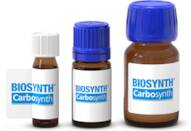Molecular sieves Type 13X
CAS: 63231-69-6
Rif. 3D-NCA23169
| 1kg | Fuori produzione | ||
| 5kg | Fuori produzione | ||
| 10kg | Fuori produzione | ||
| 25kg | Fuori produzione | ||
| 500g | Fuori produzione |
Informazioni sul prodotto
- 13X zeolites
- 13Xapg
- Colite MS 80
- Kostrolith 13X
- Kostrolith NaMSXK
- Linde Mol. Sieve 13X
- Linde Molecular Sieve 13X
- Mizuka Sieves 13X
- Mizuka Sieves 13X488
- Mizukalizer 13X
- Vedi altri sinonimi
- Molecular Seives, Type 4 A
- Molecular Sieve Type 13X
- Molecular sieve 13X 1/16
- Molecular sieve 13x
- Molecular sieve 3A
- Molecular sieve 3A 1/16
- Molecular sieve 4A 1/16
- Molecular sieve 5A 1/16
- Molecular sieves 13X
- Molecular sieves 3A 1/16
- Molecular sieves, 5A
- MolecularsievesXmmbeads
- MolecularsievesXpowder
- MolecularsievesmeshpowderLindeX
- MolecularsievespelletsLindeX
- Molsiv 13X
- Ms 13X
- Purasiv 628
- Purmol 13
- Purmol 13X
- Sylobead MS 548
- Tricat 13X5
- Zeochem 13X
- Zeolite 13X
- Zeolite 13X APG
- Zeolites, 13X
- Zeosorb 13X
- Zld 4000
Molecular sieves Type 13X are activated alumina-based materials that contain a large number of pores. These pores have an average diameter of about 3 Angstroms and can be used to separate fluids with different molecular weights. When the material is heated, water vapor and lithium metal are released. The matrix effect of the molecular sieves Type 13X is due to its interaction with the solvent, which is determined by the shape of the molecule and its acidity. The pore size has a significant effect on the adsorption capacity, but it does not affect desorption. Molecular sieves Type 13X are mainly used for dehydration reactions, such as in organic synthesis.
Molecular sieves Type 13X have low energy requirements for activation and desorption and can be used at room temperature or below without any need for heating or cooling.





